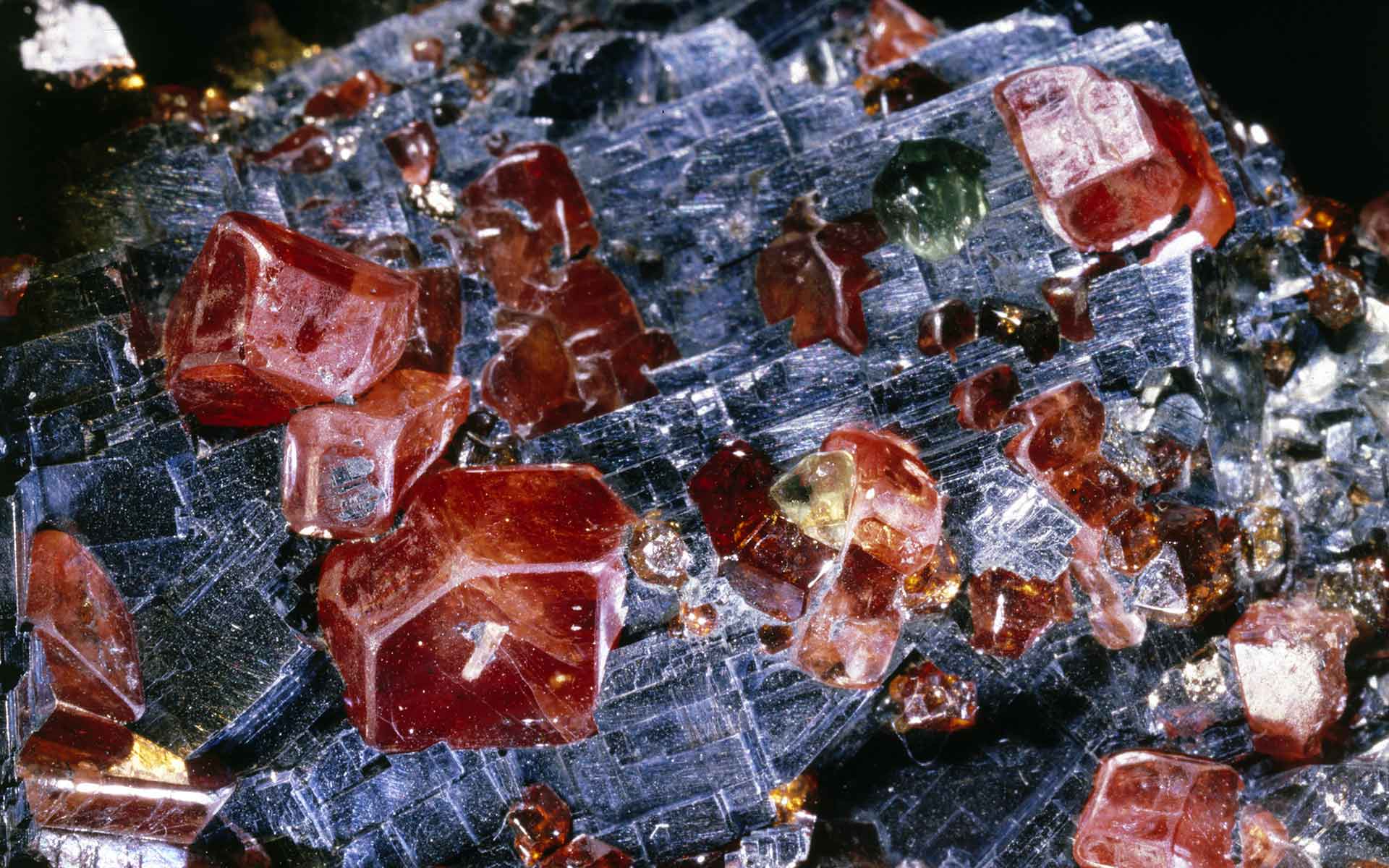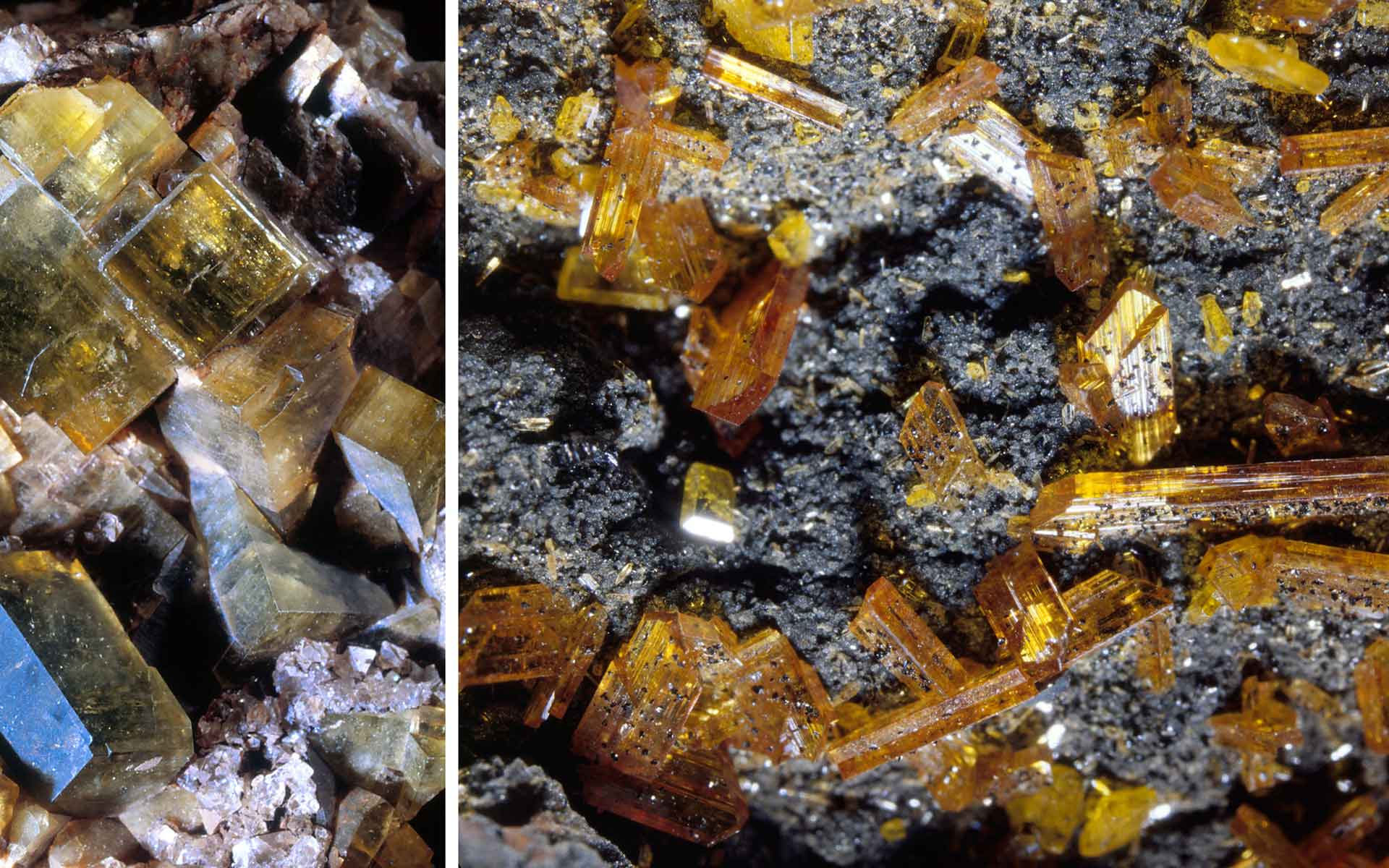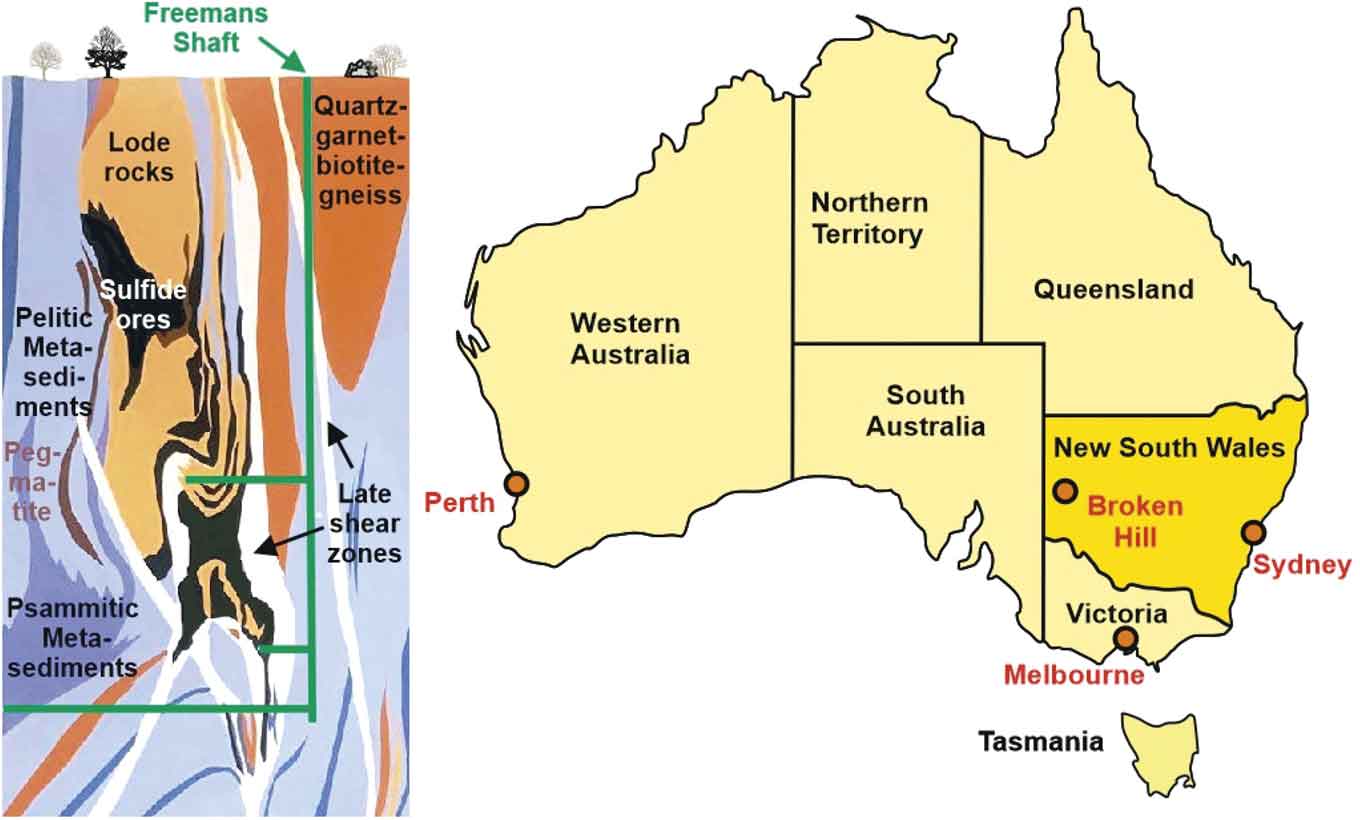
Crystals of ferrorhodonite-rhodonite (red) to 1 centimeter with spessartine (brownish red) and fluorapatite (green) in galena. North Mine. Private collection. F. Coffa photograph.
Geological Period
Paleoproterozoic to Mesoproterozoic
Main geological interest
Mineralogy
Igneous and Metamorphic petrology
Location
Yancowinna County, New South Wales, Australia
31°57’00”S, 141°28’00”E
Crystals of ferrorhodonite-rhodonite (red) to 1 centimeter with spessartine (brownish red) and fluorapatite (green) in galena. North Mine. Private collection. F. Coffa photograph.
A 'mineralogical rainforest', having yielded 340 mineral species, 26 of which are types.
Since Charles Rasp pegged its gossanous outcrop in 1883, Broken Hill has yielded an array of both beautiful and rare minerals (Birch, 1999), reflecting the primary ore’s diverse chemistry, metamorphic history and exposure to weathering. Broken Hill minerals have been assembled by museums and private collectors worldwide. Renewed opencut mining during 1980s and 1990s produced over 100 previously unrecognised species (Birch and van der Heyden, 1997). Overall, some 340 distinct minerals have been recognised and 26 have Broken Hill as their type locality (eg. Elliott, 2021). Even today, new species can be discovered in old collections (e.g. Shchipalkina et al., 2017).
- Geological description
The massive Broken Hill Pb-Zn-Ag deposit consists of nine separate stratabound sulfide lenses enclosed within strongly deformed and metamorphosed pelitic schists and gneisses. The ore lenses are now considered to have a syngenetic exhalative origin, representing periodic outpouring of hot metal-bearing fluids in a sea-floor setting in which pelitic and psammitic sediments were deposited. The entire sequence belongs to the Willyama Supergroup, dated at around 1700 million years (Stevens et al., 2008). Peak metamorphism reached granulite facies conditions of 750-800 °C and 5-6 kilobar. It was during this episode that the sulfide lenses underwent partial melting and remobilisation, followed by recrystallisation into the characteristic assemblage of coarse-grained galena-sphalerite-manganese silicates (Frost et al., 2005). There were later phases of intrusion and faulting, which had localised effects on the ore lenses. The structural geology of that part of the sequence where mining has taken place is extremely complex and has generated considerable discussion. Several generations of folding are present, at least one involving overturning of the ore lens sequence. Longitudinally, the shape of the orebody resembles a boomerang up to 8 kilometers long and 850 meters thick. Eventually the orebody was exposed as a ragged black gossanous ridge, giving rise to its name.
- Scientific research and tradition
Broken Hill truly ranks as one of the world’s great ‘mineralogical rainforests’. Since its discovery, Broken Hill has provided professional mineralogists worldwide with an array of rare species to characterise. Recently, many have been discovered by private mineral collectors. Museums worldwide have assembled representative collections for both display and research.
- Reference
Birch, W.D. (1999) Minerals of Broken Hill. Broken Hill City Council in conjunction with Museum Victoria.
Birch, W.D. and van der Heyden, A. (1997) ‘Minerals of the Kintore and Block 14 open cuts at Broken Hill, New South Wales’, Australian Journal of Mineralogy, 3(1), pp. 23–72.
Elliott, P. (2021) ‘Cardite, Zn5.5(AsO4)2(AsO3OH)(OH)3·3H2O, a new zinc arsenate mineral from Broken Hill, New South Wales, Australia’, Mineralogy and Petrology, 115(4), pp. 467–475. Available at: https://doi.org/10.1007/s00710-021-00750-2.
Frost, B.R., Swapp, S.M. and Gregory, R.W. (2005) ‘Prolonged existence of sulfide melt in the Broken Hill orebody, New South Wales, Australia’, The Canadian Mineralogist, 43(1), pp. 479–493. Available at: https://doi.org/10.2113/gscanmin.43.1.479.
Shchipalkina, N.V. et al. (2017) ‘Ferrorhodonite, CaMn3Fe[Si5O15], a new mineral species from Broken Hill, New South Wales, Australia’, Physics and Chemistry of Minerals, 44(5), pp. 323–334. Available at: https://doi.org/10.1007/s00269-016-0860-3.
Stevens, B.P.J., Page, R.W. and Crooks‡, A. (2008) ‘Geochronology of Willyama Supergroup metavolcanics, metasediments and contemporaneous intrusions, Broken Hill, Australia’, Australian Journal of Earth Sciences, 55(3), pp. 301–330. Available at: https://doi.org/10.1080/08120090701769456.
- Author(s)
William Birch.
Museums Victoria. Australia.


